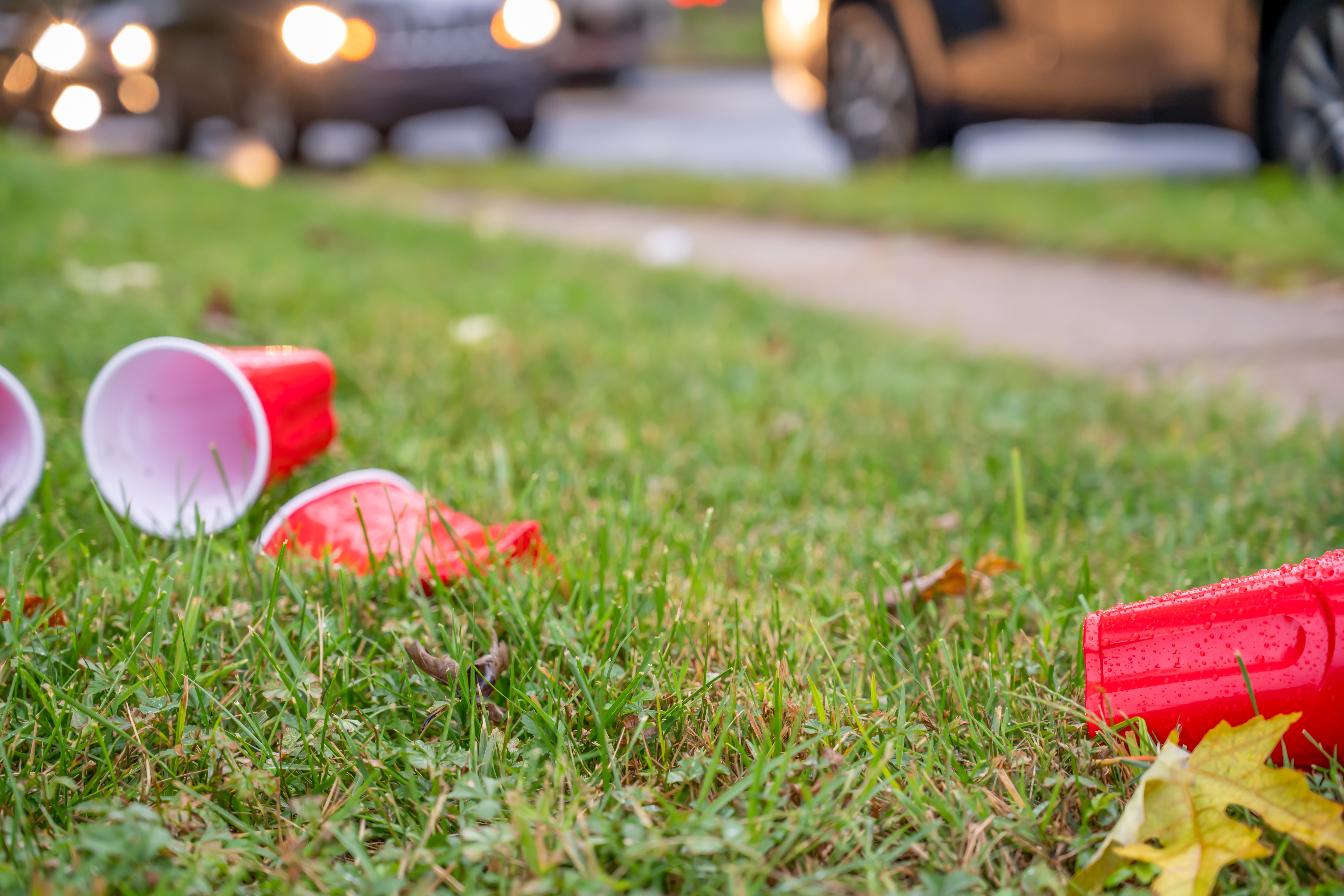College is frequently viewed as a period of personal development, independence, and self-discovery, for many students it may also be a time of dangerous decisions and unspoken hardships. College students are increasingly abusing drugs and alcohol on campuses across the country. What may begin as “just partying” or an attempt to decompress can occasionally turn into bad habits that impact relationships, mental health, and long-term success in addition to academic achievement.
College substance abuse is a problem that affects the entire community and academic community, not just the individual. Schools should be settings that promote wellbeing and assist students in managing stress without resorting to negative coping mechanisms. They should be more than just places for education.
Whether you’re a student, parent, or educator, knowing what to look for can make all the difference. This guide breaks down the key factors that lead to drug and alcohol abuse in college, including the most commonly used substances, what drives students to use them, and the toll these choices can take. We’ll also explore early warning signs, intervention strategies, and available treatment options—because prevention starts with understanding, and recovery begins with the right support.
Causes and Risk Factors of Substance Abuse in College
Below are key factors that contribute to substance abuse in a college setting, broken down in relatable terms.
Psychological and Social Stressors
Many students already struggle with stress, anxiety, or depression when they get to college, but social pressure, homesickness, and academic deadlines can exacerbate these conditions while they’re on campus. To “take the edge off” or deal with social anxiety, some people use drugs or alcohol. You frequently hear statements like “I drink so I can actually talk to people at parties” or “I just need something to calm me down before the exam.” However, anything that begins as a coping strategy can easily turn into a crutch.
Environmental Influences
Substances are frequently easily accessible on college campuses. Students are frequently surrounded by opportunities to use, whether it’s a party down the hall or easy access to booze and cannabis. Heavy drinking and drug use can be normalized by Greek life and social circles, and the idea that “everyone does it in college” makes it seem practically expected. Unfortunately, this false sense of normalcy can push students toward choices they wouldn’t otherwise make.
Academic Misconceptions
More and more students abuse stimulants like Ritalin or Adderall in the hopes of using them to study or stay up late. It’s simple to think that taking a prescription will help you focus or get better grades, but evidence indicates that these medications don’t actually help people without ADHD learn. Even worse, they may result in increased anxiety, sleep problems, and reliance. The long-term risk is not worth the short-term “boost.”
Risk Factors Unique to Campus Life
A significant life transition occurs when students enter college; many are navigating independence for the first time without parental supervision or a set routine. It’s simple to get into bad habits like skipping class or partying late at night when you have more flexibility to mingle and fewer everyday obligations. Add to that the tendency to overestimate how much others are drinking or using, and students may feel pressure to “keep up,” even when they don’t really want to.
Most Commonly Abused Substances by College Students
Every substance has a unique set of hazards, from stimulants during finals week to alcohol during gatherings. The most often used drugs and their effects on students’ life are broken down here.
Alcohol
On campuses, alcohol misuse is still the most prevalent drug, and binge drinking—consuming five or more drinks in one sitting—is a startlingly typical occurrence. These figures are doubled by certain students who additionally drink heavily. It’s frequently connected to stress alleviation, Greek life, or parties. However, even though it might appear innocuous at the time, it might result in unsafe behavior, missed courses, and low marks. Many students are unaware of how easily “fun nights out” can impact both their personal and academic lives.
Marijuana and Vaping
The usage of marijuana has become increasingly commonplace since it was legalized in many jurisdictions. When you add that to the popularity of vaping, you have a growing trend of casual, daily use. Although many students believe it’s “no big deal,” frequent use can negatively impact motivation, memory, and focus—three things that no student can afford to lose over the course of a semester.
Prescription Stimulants (e.g., Adderall, Ritalin)
While both male and female students abuse stimulants, research suggests that women may be more likely to use them for weight control, while men use them to stay competitive. The truth is that these drugs don’t significantly improve GPA and can cause dependence or burnout. They are frequently used without a prescription to help with studying or staying up all night.
Hallucinogens and MDMA
Particularly in social situations and during music festivals, drugs like MDMA (ecstasy), psilocybin (shrooms), and LSD are resurfacing. To improve their attitude or creativity, some students try microdosing. Although the concept may seem alluring, these drugs pose serious dangers to one’s safety and mental healt h and can have unanticipated side effects, particularly in high-stress academic settings.
Cocaine and Opioids
Cocaine and painkillers are still discovered on campuses, albeit less frequently than alcohol or marijuana. They are frequently found in party scenes or among high-stress, high-achieving students. Both drugs are extremely addictive, but even in tiny doses, opioids pose a significant danger of overdosing. The issue is made even more worrisome by accessibility through peers or parties.
Tobacco and E-Cigarettes
Vaping has become popular everywhere, from dorm rooms to library restrooms, while regular smoking has decreased. Although nicotine may seem safe to students, it can quickly lead to dependence, which can impair focus, sleep, and general health. Many college students who begin vaping struggle to stop long after they graduate.
Other Substances
To cope with stress, sleep, or worry, some students try using benzodiazepines (like Xanax), over-the-counter medications (like cough syrup), or inhalants (like whippets). Despite their apparent lack of danger, these chemicals can easily be abused to cause physical and mental harm, particularly when combined with alcohol or other narcotics.
Short- and Long-Term Impacts of Substance Use
Whether it’s falling behind in class or facing serious health and legal trouble, the short- and long-term consequences can be life-changing. Here’s how substance misuse can impact students across different areas of their lives.
Academic Consequences
Grades quickly decline when students begin missing courses due to late-night partying or are too inebriated to concentrate. Academic probation, a declining GPA, and missed assignments may ensue. The student might even think about quitting in certain situations. According to one student, having a “few nights out” during their freshman year had a cascading effect, causing them to fail two classes and struggle to catch up for the remainder of their college career.
Health Impacts
Frequent substance abuse can have a detrimental impact on one’s physical and emotional well-being. Students may suffer from immune system weakness, anxiety, sadness, or sleep problems. In more extreme situations, there is a chance of addiction, overdose, or even death. Something that begins as a means of relieving stress can easily turn into something that makes it worse.
Social and Legal Repercussions
Relationship problems with friends, roommates, or family are frequently caused by substance abuse. Social isolation may develop, communication becomes jumbled, and trust is damaged. Legally speaking, the dangers are equally significant: arrests, assault charges, vandalism, and DUIs can all have long-term repercussions. Losing a scholarship—or worse—could result from one reckless night.
Increased Risk of Sexual Assault
The link between substance abuse and sexual assault is well established, especially in situations where alcohol is consumed in large quantities. Greek living settings and binge drinking are frequently associated with increased hazards, particularly for women. Vulnerability, diminished awareness, and impaired judgment can result in circumstances where consent is ambiguous or disregarded. It is essential to comprehend this risk for safety and prevention.
Addressing Harmful and Underage Drinking on Campus
Let’s break down what binge drinking really means, what it can lead to, and why certain campus environments make it more likely.
Definition and Scope of Binge Drinking
Generally speaking, binge drinking is defined as having five or more drinks in a two-hour period for men and four or more for women. The speed at which it is consumed is more important than its quantity. Consider a freshman drinking a lot of beer at a party in an attempt to blend in; this type of drinking can quickly strain the body, impair judgment, and raise the chance of accidents. Long-term impacts on academic performance and health can result from even sporadic binge episodes.
Consequences of Alcohol Misuse
Heavy drinking has considerably more negative effects than just a bad hangover. Alcohol is connected to sexual violence, assaults, major injuries, and student fatalities every year. After just one careless night, several students are subject to academic probation, expulsion, or legal issues. Others may acquire Alcohol Use Disorder (AUD) in silence, a condition in which drinking begins to dominate their emotions and behaviors. Because it is concealed by campus customs, it is frequently disregarded.
Campus-Specific Risk Factors
The prevalence of binge drinking is increased by several elements of college life. The belief that “everyone is doing it,” living in dorms or fraternity houses, and going to tailgates or sports-related parties can all encourage hazardous habits. Conversely, it has been demonstrated that regular check-ins, solid parental communication, and defined boundaries assist pupils in making better decisions. Before going beyond at parties, one student revealed that a simple weekly call from home made her reconsider.
Evidence-Based Prevention and Intervention Strategies
Evidence-based practices are being used by colleges nationwide to assist students in avoiding or recovering from drug and alcohol abuse. These tactics are having a significant impact on both the broader school atmosphere and individual habits.
Individual-Level Approaches
Early detection is crucial for pupils who could be having difficulties or are at danger. Consider tools like AUDIT, CRAFFT, and NM ASSIST as health examinations for substance use, helping to screen for dangerous behaviors in a nonjudgmental manner.
Once a worry has been recognized, students are frequently assisted in reframing their choices and triggers through the use of cognitive-behavioral therapy (CBT) and motivational interviewing, a supportive discussion style that increases readiness to change. Often following a referral or an alcohol-related incident, programs such as CDCU (College Drinking: Changing the Culture) and BASICS (Brief Alcohol Screening and Intervention for College Students) provide brief, targeted interventions that meet students where they are.
Environmental-Level Strategies
Not just among students, but also around them, change must occur. Campuses that implement measures to restrict alcohol availability—such as limiting access to events or the hours of local liquor stores—see noticeable improvements. Students are more likely to select healthier routes when clear laws are enforced, substance-free housing is provided, and supervised activities are increased.
Positive peer messaging is used in media efforts like SAFER and Say It Straight to change campus norms and lessen the urge to drink. One institution discovered that student use decreased by over 15% in just one year following the implementation of a program about “myth-busting” binge drinking.
Campus Recovery Programs (CRPs)
Campus Recovery Programs (CRPs) are a lifeline for students who are in recovery or who are prepared to begin. These programs provide tools for relapse prevention, peer support groups, and sober housing in a stigma-free setting. CRPs assist students in reestablishing their social and academic life in addition to their sobriety.
One student described how he felt like he was still a part of college life while maintaining his sobriety thanks to the support he received from joining a CRP. He went from barely passing classes to graduating with honors because to organized check-ins and new friendships with classmates.
Treatment Approaches by Substance Type
Since each chemical has a different effect on the body and brain, rehabilitation calls for specialized techniques. A student’s life can be changed by the correct combination of therapy, medicine, and support, regardless of whether they are battling with alcohol, nicotine, stimulants, or something more potent like opioids. To make it easier to comprehend what help might look like, let’s break it down by substance kind.
Alcohol and Nicotine
Detox is frequently the initial step for students attempting to stop using alcohol or nicotine, particularly if dependence has already been established. Due to the severity of alcohol withdrawal, medical care may be required. Nicotine Replacement Therapy (NRT), such as patches or gum, can then help tobacco smokers reduce their cravings.
Both drugs benefit greatly from therapy, particularly cognitive behavioral therapy (CBT), which teaches students how to identify triggers and develop better coping mechanisms. Medication-assisted treatment (MAT) for alcohol consumption disorder, such as acamprosate or naltrexone, might lessen cravings and the likelihood of relapse.
Stimulants and Cannabis
Academic or emotional stress is frequently the cause of cannabis and amphetamine (like Adderall) abuse. Here, behavioral therapy is crucial since it teaches children the reasons behind their behavior and how to change it. Additionally, motivational interviewing can be very successful, particularly when a student is undecided about stopping.
Additionally, contingency management—which employs incentives to promote sobriety—is becoming more popular. Although there are currently no FDA-approved medications for cannabis or amphetamine addiction, research into new pharmacotherapies is giving people hope.
Opioids
Because opioid addiction is severe and frequently fatal, therapy must be closely monitored. The gold standard is medication-assisted therapy (MAT), which uses naltrexone, buprenorphine, or methadone to help regulate brain chemistry and decrease cravings.
Residential treatment programs or intensive outpatient care are frequently advised due to the elevated risk of overdose and relapse. Wraparound services like case management and mental health counseling also help a lot of students.
Hallucinogens, Benzodiazepines, Inhalants
Substances like LSD, Xanax, or inhalants are less frequent but nevertheless harmful, and they present special difficulties of their own. When someone isn’t ready for complete abstinence, harm-reduction techniques like safe detoxification or supervised use instruction are frequently the first course of action.
Because benzodiazepines can cause seizures during withdrawal, detoxification needs to be medically managed. Inpatient treatment is frequently the safest option for all three substance categories, particularly if use is frequent or co-occurring with other drugs.
Special Treatment Considerations for College Students
Let’s explore the special factors that schools, families, and providers have to consider when helping college students get the treatment they need.
Confidentiality and Insurance Challenges
Privacy is one of the main issues that students worry about. If kids are afraid that parents or school officials may see their medical records, they could be reluctant to get care. While FERPA applies to educational records and HIPAA protects health information, things can become hazy in a college setting, particularly when parents are paying the expenses or when schools are involved in disciplinary measures. Clear instructions on what is private and what may be revealed are necessary for students.
Medical Leave and Treatment Planning
A leave of absence may occasionally be necessary for treatment; preparation is essential for both academic performance and recuperation. To prevent falling behind, students should collaborate with their school to develop a systematic re-entry plan. While some international students can benefit from off-season treatment, such as during summer or winter break, when academics are halted, others might encounter visa problems or cultural stigma.
Summer and Off-Campus Continuity
Even when the facility is closed, care continues. Coordinated care across locations is crucial since students frequently move or go home during breaks. Prescription monitoring, telehealth, and referrals to nearby therapists all contribute to consistency. By scheduling check-ins or collaborating with student health services during transitions, families can help with this.
Tuition Insurance
Students who struggle with substance abuse may have disruptions in their academic pursuits. Tuition insurance can assist in covering tuition expenses in the event that a student must drop out of school in the middle of the semester due to illness or mental health issues. It’s a wise financial safety net that provides some comfort to kids who are at risk of quitting school because of addiction.
Controversial and Institutional-Level Issues
Some of the most contentious issues surrounding substance use in college take place at the institutional level. Schools must balance upholding students’ rights with safeguarding their health. College policies have the power to influence campus culture and students’ faith in support networks, whether they involve requiring drug testing or restricting access to stimulants.
Mandatory Drug Testing on Campus
There have been heated legal and moral discussions surrounding the possibility of requiring drug testing for college students, particularly athletes or those enrolled in specific programs. While certain court decisions have supported testing in particular situations (such as for athletics), testing all pupils at once is frequently viewed as intrusive and maybe unlawful.
Beyond the legislation, many wonder if this strategy is beneficial or detrimental. Critics contend that it compromises privacy, diminishes student autonomy, and may encourage students to conceal problems rather than ask for assistance.
Controlling Nonmedical Use of Stimulants
Stimulants like Ritalin or Adderall, sometimes referred to as “study drugs,” are increasingly being abused on college campuses. Many campus health facilities are responding by tightening their procedures, which include limiting refills or demanding thorough examinations before to prescribing ADHD drugs. These actions create concerns for students who actually need medication, even though their goal is to lessen usage. It can be challenging to strike a balance between responsibility and access, and rules must guarantee that students with valid needs receive assistance.
Recommendations for Mental Health and Addiction Professionals
When it comes to privacy regulations and class scheduling, professionals need to adapt their methods to meet students where they are. Here are several ways that addiction and mental health professionals can offer significant, student-focused assistance.
Clarify confidentiality limitations from the start
A common misconception among students is that anything they discuss with their counselor is private. Be clear about what is and isn’t secret, particularly when it comes to school rules, legal matters, or family participation. This prevents future misunderstandings and fosters trust.
Screen for past sexual assault and trauma
Unresolved trauma frequently coexists with substance use. To check for interpersonal abuse, childhood trauma, or sexual assault, employ intake assessments. A meaningful recovery may depend on addressing these underlying causes.
Adapt treatment plans to student schedules
Life in college is busy. Class schedules, tests, and campus activities should all be taken into account during therapy sessions and support groups. Providing flexibility, such as telehealth or nighttime classes, can increase engagement and advancement.
Create detailed leave-of-absence protocols
Assist students in creating a well-organized plan for when they require time off for treatment, including how to inform the school, maintain their academic standing, and reintegrate later. This lowers stress and enhances results.
Support international students with legal coordination
When seeking therapy, international students must deal with legal and immigration issues. To guarantee ongoing support, collaborate with school legal experts to assist in arranging pharmaceutical access, cross-border treatment, and documentation.
Anticipate and plan for summer treatment gaps
Progress may be hampered by breaks in between semesters. Prior to the summer, create a continuity of care plan that includes finding nearby providers, controlling prescriptions, and keeping check-ins to avoid relapse or disengagement.
Conclusion
Although the problem of substance abuse on college campuses is undoubtedly complicated, it is by no means unsolvable. Saying “no” to drugs and alcohol isn’t enough; we also need to recognize the underlying problems, mental health disorders, peer pressure, and academic pressures that lead children to engage in these detrimental habits. A multimodal strategy is needed to properly address this issue, ranging from early detection and education to individualized care and strong institutional support.
Colleges can establish safer and healthier settings that enable students to thrive both academically and beyond by promoting a thorough, evidence-based, and compassionate approach to student substance use.
Additionally, having a legal ally like K Altman Law can help you navigate this always changing issue by ensuring that your campus regulations are both effective and compliant, assisting you in creating an atmosphere that emphasizes the well-being of students while upholding the integrity of your institution.





